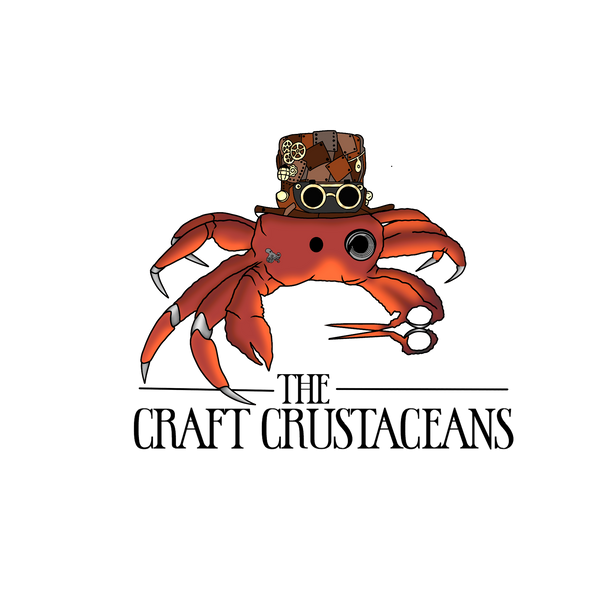
Reusable Straw Pouch Tutorial
**I've had this tutorial on an old blog for a few years, but I FINALLY wanted to grab it and move it here.**
A friend of mine asked if I could make a pouch for her reusable straws. I know I could've probably searched for a way to do it online, but I decided to challenge myself to do this item "from scratch."
Okay, I'm fibbing a little bit...
I'm using the idea from the envelope snap pouches that I have and making them longer and thinner.
Also, for some of the photos in the beginning of the post, I used an old blue bed sheet because I was testing out the pattern before I cut into the fabric I'm using for the pouch itself.
Those pieces of fabric will be shown in some of the other photos. 😊
Materials:
- The amount of fabric will ultimately depend on the direction of the pattern on the fabric. For instance, I needed at least 3/4 yard of the striped fabric because I wanted the stripes to be vertical. The lining can be less because as long as I have the full width, I'm in good shape due to it being a solid color.
- Fusible interfacing. I'm using Pellon style #906F with this project, but if you want more structure, you can use Pellon 808 Craft Fuse, but this might be harder to turn. (I use the 808 in the small pouches above)
- Cutting mat
- Rotary cutter
- Pins or clips
- Iron
- KAM snaps
- Thread of your choice. I'll be using a matching thread, but of course, you can use any thread you wish.
- Sewing machine
I always make sure to iron my fabric, if I am able, to get all of the creases out of it. Some fabrics, like the striped fabric in this post, require a warm iron, but it doesn't seem to wrinkle as easily as quilting cotton fabrics, so I didn't bother to iron that one out. (I honestly don't know/remember what kind of fabric it was material-wise.)
The solid colored fabric, which is 100% quilting cotton, definitely needed to be ironed before I started cutting. Some fabrics may also require you to wash before you start cutting it.
*Make sure to follow all washing directions for your fabric.*
Now - let's get started!

I cut the fabric to measure 22 inches by 3 inches.
Cut one of your outer fabric, one of your lining, and one or two of the interface. For the pouch I'm making, I'm only going to cut one piece interfacing to fuse with the lining piece.
After I cut the long strip, I used my square ruler to cut a point at one end. You're going to want to do this for both pieces of fabric and the interfacing.


After the pieces are cut, fuse your interfacing on the wrong side of the fabric following the directions on the packaging. I will admit, I didn't quite follow the directions on mine, but it didn't stick well unless I did it "my way," which I tested on a piece of scrap before I went ahead with the whole piece. I would still highly suggest reading the directions on your packaging.

Iron fusible interfacing to the wrong side of your fabric.
Next, place your fabric right sides together and pin or clip.
Stitch together with a 1/4 inch seam allowance leaving an opening of about 2 inches to turn right side out.
Don't forget to back stitch at the beginning and end! I had to use extra pins and clips because the striped fabric is so slippery.


Clip the corners.


I also used my pinking shears along the seam allowance to help reduce bulk. I did not cut where the opening is so I'm sure the opening is closed when I top stitch.

Turn and poke out the corners.

If you want to, you can iron your project to make sure it's flat. This can help when you start to fold it.
Also make sure that the fabric is tucked in at the opening where you turned it! Pressing the project will help keep the opening folded in for later, also.
Stitch along the straight end using a 1/8 inch allowance. (I actually forgot to do this step, but it's not actually required.)
Now, fold the bottom up about 9.5 inches. This doesn't have to be exactly 9.5 inches. You can fold it so it comes up 9 or 10 inches. This will also give you a longer flap.
Pin or clip everything in place!

Starting at one corner, I top stitched using a 1/8th inch seam allowance all the way around to the other corner. I will often back stitch when I get to the pouch opening to help reinforce it.
Don't forget to back stitch at the beginning and the end!
Don't stitch the bottom fold!


Place your snaps on your pouch where you would like them. I would recommend putting the "bottom" snap on before you do the top stitching. You can put the snap on the flap after stitching.

Now, the pouch for your reusable straws should be completed!

Seeing as this is my first tutorial, I do hope that it helps and is easy to understand.
Let me know if you have any problems!
I quite enjoyed this project. This item was a special request and I thought it would be neat to share how I made it.
The initial pattern was purchased from Craftsy; however, it is no longer available.
Thank you for reading!
